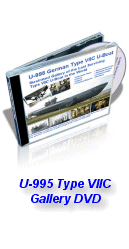

|
Torpedoes
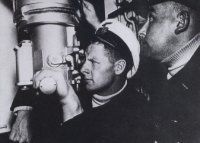 |
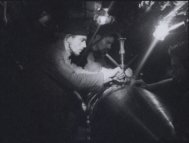 |
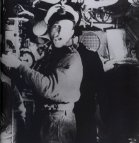 |
| The captain takes aim. | The crew programmes the torpedo. | Los! Eels away! |
World War II U-boats were designed for one main purpose; to torpedo enemy ships. Known to the crew as Aal (eel), the torpedo was the only weapon which made submerged attacks possible - and when surfaced, was also often used in preference to the deck gun.
German torpedoes were broadly categorized into two basic types – the steam powered G7a and the electrically powered G7e. They had identical external dimensions which were 23.5ft (7.16m) long and 21 inch in diameter. All could be launched from the standard U-boat torpedo tube except for a small number designed by Profesor Walter, which were 16.4ft (5.0m) long. These torpedoes were designated with a capital “T”, followed by a roman numeral (eg TI, TV). In addition, they were represented with a three character model number (eg G7a), to identify the torpedo type. All world war two torpedoes used the model “G”, followed by a number identifying its length (5 or 7 meters), and the final letter identified the propulsion method (a=steam, e=electric). Towards the end of the war, torpedoes were also given codenames, such as Falcon or Wren.
The torpedo was a highly sophisticated piece of weapon, which also meant that it was one of the most expensive weapons of its time. In essence, it consisted of the pistol, warhead, depth-keeping device, propulsion and the guidance systems. Early German torpedoes suffered from many problems, particularly with premature or failed detonations and depth keeping which would cause a torpedo to break the surface or run too deep – either of which meant that a perfectly aimed torpedo would fail to sink its target.
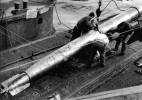 |
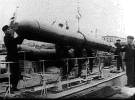 |
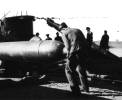 |
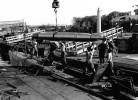 |
Pistol
The device to detonate the warhead was the pistol. There were two types, magnetic and contact pistol. Most torpedoes had both types and the captain could select a combination of magnetic, contact or both, prior to launching the weapon.
The magnetic pistol was triggered by the ship’s magnetic field and was designed to explode underneath the hull. Such explosions could break a ship’s hull in two, sinking it with just one torpedo. However, magnetic pistols were prone to premature detonations, with many exploding as the torpedo approached the wake of the ship. There were several reasons for this. First, the earth’s magnetic field changes with different latitudes, which were not properly offset by the device. Second, torpedoes tend to approach the target from astern, where the differential speed was reduced. The magnetic pistol could not detect a gradual change in magnetic flux, and failed to detonate. Finally, poor design led to high vibrations within the torpedo itself, which ultimately caused the relay to fail. Until the problem was solved, the less effective contact pistol was used.
Contact pistols comprised of four whiskers mounted at the tip of the torpedo nose. They were designed to react to a glancing blow which detonated the warhead. Many problems were also encountered as it was discovered due to poor design, only a narrow impact angle of approximately 20 degrees was required to consistently trigger the pistol. There was also a safety device which armed the pistol only after a minimum run of 250 meters. For this, a small propeller was fitted to the nose of the torpedo. As it moved forward, rushing water would spin the propeller until it wound shut, arming the pistol.
Warhead
The standard torpedo warhead was 617lbs (280kg) of TNT/HND/AL (a mixture of hexanitrophenylamine, trinitrotoluene and aluminum). Located at the forward section of the torpedo, the only size variation was in the acoustic TV torpedoes (Falcon and Wren) which contained a slightly reduced size of 604lbs (274kg).
Depth Keeping Device
Depth keeping was as crucial a factor as any other element of torpedo design. The maximum running depth was 15 meters, which U-boat captains could set prior to launching the torpedo. A number of factors had to be taken into consideration. The draught of the ship’s hull and the current conditions of sea. When an impact pistol was used, the torpedo had to run shallow enough to hit the ship’s side. With a magnetic pistol, it had to run just underneath the target. It was also important that the torpedo should not break the surface during its run, thereby alerting the watchful enemy of an approaching torpedo.
Torpedoes had to be launched on the surface or at periscope depth. But later versions of German torpedoes such as the TV (Zaunkonig II) could be launched from up to a depth of 50 meters. At the end of the run, torpedoes were designed to sink automatically. However they frequently detonated when hitting the sea bed and on other occasions exploded when the pistols collapse under the sea pressure. Later in the war, a device was fitted which automatically disabled the torpedo pistol when a depth of 150 meters was reached.
A depth gauge and its servo consisting of a pendulum and a hydrostatic valve kept the torpedo running at the desired depth. The depth keeping device was directly connected to the diving rudders fitted at the torpedo’s tail. Problems were encountered with depth keeping as well, which was even more pronounced when the torpedo altered course (as in the FaT and LuT pattern running torpedoes). Captured records show that depth keeping was still a major concern up to as late as Spring of 1941.
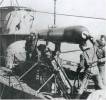 |
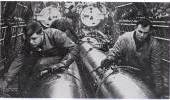 |
 |
 |
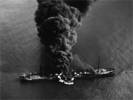 |
Propulsion
There were two basic types of propulsion. The first was the alcohol powered G7a combustion steam engine which provided three preset speeds – 44 knots at 5,000m; 40 knots at 7,500m; 30 knots at 12,500m. However the maximum setting of 44 knots frequently overloaded the engine and this setting was banned until the problem was solved in the middle of the war. Alcohol fuel and compressed air powered the torpedo’s four-cylinder engine, which in turn spun two counter rotating hollow drive shafts, one inside of the other. The drive shafts turned two six bladed propellers, which spun in opposite directions so as not to create torque which would distort the torpedo’s course. Spent exhaust gases were expelled at the tail end of the torpedo. Although very reliable and possessing good range, the G7a left a visible trail of bubbles on its way to its target. This could warn targets of the impending attack and allow them time to evade. Because of this, it was used mainly for long-range or night attacks.
The second type is the battery powered G7e. Featuring two counter rotating two-bladed propellers, the large battery takes up over one third of the torpedo’s mass, or eight feet and weighs a discernible 711kg. The internal housing has a series of heating elements which were used to heat the battery to 86 degrees Fahrenheit prior to launching. A pre-heated battery will extend the torpedo range by up to 60 percent, or 30 knots at 5,000 meters. While not as long ranged as its steam powered counterpart, the battery powered G7e left no tell trail signs of bubbles, making it more suitable for daylight attacks.
Guidance System
At the start of the war, torpedoes could be programmed to make one turn immediately after leaving its tube. The torpedo would then continue in a straight path until it struck its target or ran out of fuel. As the war progressed, U-boats were being forced to launch their torpedoes under more disadvantageous positions. The need for a more effective convoy weapon became increasingly urgent, and this led to the development of pattern running torpedoes.
Designed as a specialized anti-convoy weapon, the FaT and LuT torpedo could be programmed to run in a straight line for a given distance, then if it did not hit a target, the torpedo then turned to the right or left (as pre-set) and began a zigzag search pattern until it struck a target or ran out of fuel. Such weapons were designed to run across the path of a convoy, where if the initial run failed to hit the target, then the chances were good that the ladder search pattern would eventually score a hit. U-boats launching pattern running torpedoes were required to radio a warning to nearby U-boats to prevent a friendly attack.
Next to appear was the acoustic homing torpedo. Designed as an anti-warship weapon, the acoustic torpedo had two hydrophones side by side that directed the torpedo to home in on the target’s noise signature. Due to the problem of the torpedo’s self noise, the maximum speed that could be achieved was 25 knots. In addition, the sensor was only sensitive to targets moving at between 12 and 19 knots. If the escort ship moved at a significantly higher or lower speed, the torpedo would have difficulty tracking them.
The allies had a great deal of intelligence about the acoustic torpedo – even before it had entered service. The allied response was a noise maker; an anti-acoustic torpedo device called the Foxer. This noise maker was towed behind warships to decoy the acoustic sensors of the torpedo, thus luring it away. The benefits of the Foxer were somewhat questionable, as it made such a loud noise that U-boats were able to detect distant convoys, that might have ordinarily not have heard the convoy. It also interfered with sensors and sonars and were very cumbersome to use and maintain. Realizing what was happening, the Germans developed a new generation of acoustic sensors which were more accurately tuned to ships’ propeller noises, but the allies had also continued to keep pace by improving the Foxer.
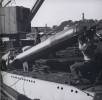 |
 |
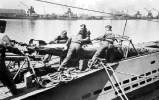 |
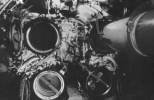 |



